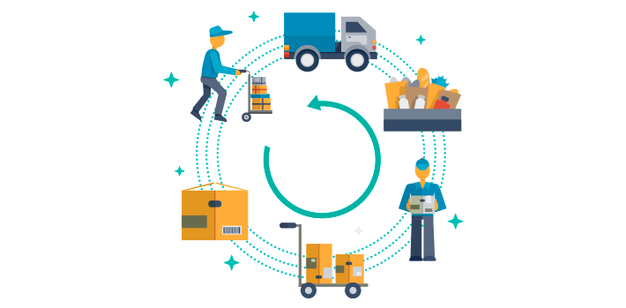
26 Aug Reverse Logistic
What is reverse logistics?
Society is currently becoming aware of the need to reduce the waste we generate. Currently almost a third of urban solid waste is packaging, year after year its growth increases.
Reverse logistics facilitates the creation of channels for the selective collection of waste, be it industrial, vehicle or end-of-life tires, waste from electrical-electronic equipment, construction waste or waste from meat by-products.
We can define it as a strategy in the world of logistics that consists of recovering waste originated by a consumer activity.
According to (Antonio, 2018) reverse logistics is responsible for recovering and recycling containers, packaging and hazardous waste; as well as the processes of return of excess inventory, customer returns, obsolete products, seasonal inventories. It is a way of returning materials that are reused, recycled or destroyed.
What is reverse logistics for?
Logistics also evolves and adapts to the needs that the sector is gradually having. This type of logistics was born to help care for the environment, an increasingly important need.
What can reverse logistics bring?
Reverse logistics is a necessity and an opportunity to increase the quantity and quality of recycled material. Among the benefits we can find:
Advantage:
- Caring for the environment: It reduces the environmental impact, although it is not a primary object, it does take care of it.
- Reduce the cost: Being able to recycle, reuse or even manufacture materials again, is a way to save compared to the purchase of new raw materials.
- Reduction in the consumption of resources: These reduce the cost of purchasing and supplying materials, as well as new resources.
- A better relationship between customer and supplier: Both parties benefit.
Drawbacks
- Increased work: Reverse logistics processes are not easy. You have to know how to manage the supply chain and make proper programming so that it works well.
- All departments of the company must participate: through this process a large part of the company has to get involved, if not, it may be negative for the work.
- Control of the products that are returned: here it is necessary to have personnel to inspect the materials, and the review must be done one by one, something expensive.
- Return of material: sometimes the cost of reverse logistics cannot be amortized. If the customer returns small quantities, the recycling or reuse may end up not being worth it.
As mentioned above, reverse logistics is a good option, however, you have to be sure that it can be carried out.
References
Antonio, R. (2018). La logística inversa: ¿qué es y para qué sirve? Retrieved July 20, 2021
